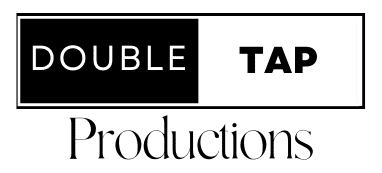
Unraveling the Mystery of SEO: A No-BS Guide for the Digital Age
Hey there, digital nomads and web wizards! Are you ready to elevate your website from the hidden corners of the internet to the spotlight of Google’s first page? If you nodded your head (or even if you’re Alright, peeps, gather around! Today, we’re diving into a topic that sounds like it’s straight out of a wizard’s spellbook but is actually the secret sauce behind why some websites get all the glory (read: clicks) while others languish in the dark corners of the internet. Yep, we’re talking about SEO, or Search Engine Optimization, for the uninitiated.
So, what’s SEO, and why should you care? Imagine you’ve just opened a swanky café in town. It’s got mood lighting, the coffee would make even the snobbiest barista weep tears of joy, and your avocado toast is to die for. But there’s a catch – your café is hidden in an alley, behind a nondescript door, with no sign. That’s your website without SEO.
SEO is the neon sign, the map, and the friendly local who takes you by the hand and leads you to that door. It’s a collection of strategies and practices designed to prop up your website so when someone types “best café in town” or “where to get the best avocado toast” into Google, Bing, or any search engine, your website pops up like a jack-in-the-box.
just curious), you’re in the right place. Today, we’re diving deep into the world of On-Page SEO – that’s right, those magical tweaks and tricks that can shoot your site’s traffic through the roof. So grab a cup of coffee, and let’s unravel these secrets together.
How Does SEO Work?
First things first, let’s talk meta tags – specifically, title tags and meta descriptions. These little snippets of text are your first date with your potential site visitors. A catchy title tag can be the difference between a click and a scroll-past. Keep it unLet’s break it down. Search engines are like librarians for the internet, but instead of books, they organize web pages. They send out crawlers (think digital spiders) that collect information on all the content they can find on the internet. This massive pile of data is then indexed and fed through an algorithm that matches your query with the most relevant results.
SEO plays into this process by ensuring your website speaks the same language as these search engine algorithms. It’s about making your site more attractive to these digital librarians by ticking off the right boxes. Here’s a rundown of how you can sweet-talk these algorithms:
der 60 characters to ensure it displays correctly in search results. Your meta description is your elevator pitch – make it compelling and under 160 characters. Include your main keyword but avoid stuffing; think natural and enticing.
1. Keywords: Your First Love
Imagine if you could read minds and knew exactly what your crush (or in this case, your audience) was thinking. That’s what keywords do for you. They are the terms and phrases people type into search engines. Including these in your website’s content increases the chances of your site showing up when someone searches for those terms.
2. Quality Content: The MVP
Search engines love fresh, relevant, and quality content. It’s like feeding them gourmet meals instead of fast food. Producing informative, engaging, and valuable content not only attracts search engines but keeps humans interested too. And the longer visitors linger on your site, the more search engines believe you’re serving up something good.
3. Page Speed: Faster than a Tinder Swipe
We live in a world of instant gratification. If your site loads slower than it takes to swipe left, you’ve lost a potential reader, customer, or follower. Search engines know this and favor sites that load quickly across all devices, especially mobile.
4. Link Love: It's All About Connections
Links are the internet’s way of saying, “Hey, check this out, it’s cool!” When reputable sites link to your website, it’s like getting a vote of confidence. This tells search engines that your site is also reputable and worth showing to users.
5. User Experience (UX): Don’t Be a Maze
Ever landed on a site that’s about as easy to navigate as a maze without a map? Yeah, not fun. Search engines feel the same way. A well-structured, clean, and easy-to-navigate website not only makes visitors happy but also makes it easier for search engines to crawl your site and index your content.
The Long Game
Now, let’s get one thing straight: SEO isn’t a one-night stand; it’s a commitment. Changes won’t happen overnight. It’s a long-term strategy that requires patience, persistence, and constant tweaking. But when it starts working, it’s like having a 24/7 billboard on the busiest highway on the internet, directing traffic to your site.
TL;DR?
SEO is your website’s best friend. It’s about making your site more visible and attractive to search engines so you can rank higher in search results, bring more traffic to your site, and achieve your internet domination goals (too much? Okay, let’s stick to increasing visibility and traffic). Remember, it’s a marathon, not a sprint. Keep refining your strategy, stay up-to-date with the latest SEO trends, and watch your site rise from the depths of the search engine results pages to stardom.
So there you have it, folks – a crash course in SEO without the jargon. Now go out there and make your website the rockstar it was always meant to be!
